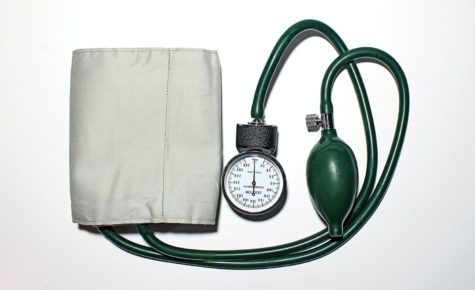Editorial: The ethics of the death penalty
The ISD Editorial Board discusses the ethics of some parts of the death penalty, arguing for safer and more “ethical” executions.
September 13, 2020
Editor’s Note: This editorial has been updated to accurately recognize a source for information. The Daily regrets for this error.
The death penalty is a long-debated conversation. Some people are all for it, some are totally against it and others really don’t know how to feel about it.
Regardless of your views on the death penalty itself, however, there are a few aspects that need to be addressed.
In the United States, 28 states have the death penalty while 22 do not, with Iowa being a state that does not have it. This hasn’t always been the case. Between 1834 and 1965, Iowa carried out 46 executions, all of which were men. Three were executed for rape, and the other 43 were executed for murder.
If someone is going to be put to death, let’s look at the medical ethics behind the procedure.
The lethal injection method can be labeled as unusual punishment. This method is the most widely used, according to the Death Penalty Information Center.
It involves large doses of sodium thiopental to induce “deep sleep,” pancuronium bromide as a “paralyzing agent” and then potassium chloride for cardioplegia. Some court challenges showed drug dosages are not consistent, resulting in different levels of sedation. Some inmates could have experienced a lot of pain from the potassium chloride.
Those being executed are being put to death for a reason: they committed some sort of heinous crime. But being executed is punishment already, so the procedure should be as flawless as possible, and flawless means painless.
And can we trust the physicians performing the executions? Multiple states suspended executions to reexamine the methods and to look at the ethical standards of the physicians. The physicians should be supervised, and there needs to be frequent reflection conversations to check in with them and ensure the ethical standards are being met.
There is a racial bias in the death penalty. Racial bias is in everything; we can’t escape it. For the crime of rape, 89 percent of executions in the early 20th century involved Black defendants for the rape of white women. Looking at executions for murders, 75 percent of the cases involved white murder victims. This is suspicious because people of color can also be murder victims, so why are the numbers so unequal?
Now, of course, we also have to talk about those who struggle with mental health. The Guardian told the story of Andre Thomas, who was diagnosed with paranoid schizophrenia. The U.S. Supreme Court said the mental illness of a defendant must be considered as a reason to spare their life.
Yet Thomas was “subsequently treated” and “deemed fit to stand trial.” Yes, he was deemed fit to stand trial. He cut out his children’s hearts and his wife’s lung, and he attempted to stab himself to death, but he failed to do so, so he put the organs in his pocket and went home. A few days later, he cut out his eye and later told investigators, “I thought it was what God wanted me to do,” concerning his actions. But, sure, he was deemed fit to stand trial.
Years later, he took out his other eye and ate it. He was said to be “sane” under Texas law; however, he was sentenced to death and continued to be tortured by the voices in his head.
You can read more about Thomas’ story and others who were mentally ill but still “deemed fit to stand trial.” There are a lot of details that can only point to not being sane, and those individuals deserved mental health help, not death.
And what if someone is innocent and executed, but the evidence is discovered weeks, months or years after that person’s heart has stopped beating? That court decision cannot be changed. That person cannot be brought back to life. Their loved ones do not get to see them smile or hear their voice ever again because they are dead.
The death penalty also takes a mental toll on the prison guards working on death row, which is definitely a group of people forgotten about when it comes to this procedure. Everyone involved in these court cases and procedures can experience trauma.
“Prison guards, who most closely interact with condemned prisoners on a daily basis, are particularly affected, including and especially those acting as executioners,” according to the Penal Reform International.
This can be added to the list of reasons why the death penalty should just not be a thing, but we can’t just get rid of it because that’s not how laws work.
Some sort of counseling or crisis support needs to be provided to those working on death row. They can’t just be expected to be fine after watching someone die, especially if they are the one doing the injections.
There are clearly a lot of aspects of the death penalty that are cruel, and that’s not even addressing the death part of the execution. The individuals put to death, their families, the prison guards who work with them, the physicians and the public have to suffer because of the death penalty.
So, if certain states insist on having the death penalty procedure, they need to be following regulations and ethical standards, which also need to be constantly discussed to make sure the process is as “humane” as possible.

















